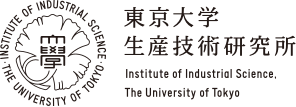
The COVID-19 pandemic increased public awareness of the importance of mask use for personal protection. However, when the mesh size of mask fabrics is small enough to capture viruses, which are usually around one hundred nanometers in size, the fabric typically also restricts air flow, resulting in user discomfort. But now, researchers from Japan have found a way to avoid this.
In a study published this month in Materials Advances, researchers from the Institute of Industrial Science, The University of Tokyo have overcome this bottleneck and developed a filter capable of capturing nanoparticles such as viruses without greatly restricting air flow. They managed this feat through careful design of the pore structure in the filter.
The filter is constructed from nanosheets consisting of an ordered mesh composed of porphyrins, which are flat, ring-shaped molecules with a central hole. The tiny holes in the porphyrin molecules are suitably sized to allow the easy passage of the small gas molecules in air while blocking the movement of larger particles, such as viruses. The nanosheets are then supported on a fabric modified with nanofibers containing pores of several hundred nanometers to form the filter.
"The porphyrin-based nanosheets are constructed through interfacial reactions that are driven by the movement of reactants caused by the gradient of surface tension at the air-solvent interface, known as the Marangoni effect," says senior author Kazuyuki Ishii. "The nanosheets are then compressed and coated on nanofiber-modified fabric using a stamp method."
The team tested their filter using the standard procedure used to test N95 face masks. The results of the particle filtration tests revealed that the filter effectively trapped particles that were as small as viruses. The filter achieved a particle filtration efficiency of 96%, which exceeds the requirement of 95% for an N95 face mask.
"Our porphyrin-based filter collected nanoparticles with a diameter as small as one hundred nanometers," explains senior author Kazuyuki Ishii. "Importantly, the filter also showed minimal decrease of differential pressure in gas flow measurements. This indicates that the filter is capable of trapping particles as small as viruses, while barely restricting air flow."
The team's approach involving coating porous nanosheets on nanofibers is promising to provide materials capable of effectively filtering small particles like viruses while maintaining air flow to ensure both user comfort and protection.
The article "Hybridization of Nanofiber-modified Fabrics with Porphyrin-based Nanosheets for Nanoparticle Capture" was published in Materials Advances at DOI:10.1039/D5MA00058K.
Research Contact
Kazuyuki Ishii, Professor
Institute of Industrial Science, the University of Tokyo
E-mail:k-ishii (Please add "@iis.u-tokyo.ac.jp" to the end)
